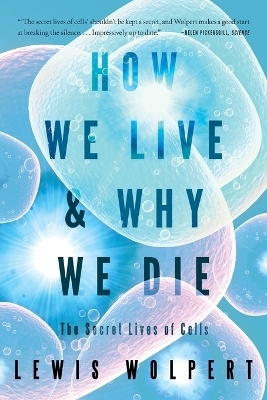
How We Live and Why We Die
The Secret Lives of Cells
Seiten
2011
WW Norton & Co (Verlag)
978-0-393-33938-3 (ISBN)
WW Norton & Co (Verlag)
978-0-393-33938-3 (ISBN)
Acclaimed biologist Lewis Wolpert eloquently narrates the basics of human life through the lens of its smallest component: the cell.
Everything about our existence— imagination and reproduction, birth and death—is governed by our cells. They are the basis of all life in the universe, from the tiniest of bacteria to the most complex of animals. Genes in developing embryos determine the makeup of individuals, and the rapid firing between nerve cells creates the spirit of who we are. When we age, our cells cannot repair the damage they have undergone; when we get ill, it is because cells are so damaged they stop working and die.
In the tradition of Lewis Thomas’s science classic The Lives of a Cell, Wolpert, an internationally acclaimed embryologist, draws on the recent discoveries of genetics to demonstrate how human life derives from a single cell and then grows into a body: an incredibly complex society made up of billions of cells. Wolpert sensitively examines the science behind often controversial research topics that are much discussed by rarely understood—stem cell research, cloning, DNA, and mutating cancer cells—all the while illuminating how the intricacies of cellular behavior bear directly on human behavior.
Wolpert isn’t afraid to tackle the tough questions, including how and why single cells evolved into complex organisms and, first and foremost, what gave rise to the original cell, the origin of all life. Lively and passionate, How We Live and Why We Die is both an accessible guide to understanding the human body and a deeply reverent meditation on life itself.
Everything about our existence— imagination and reproduction, birth and death—is governed by our cells. They are the basis of all life in the universe, from the tiniest of bacteria to the most complex of animals. Genes in developing embryos determine the makeup of individuals, and the rapid firing between nerve cells creates the spirit of who we are. When we age, our cells cannot repair the damage they have undergone; when we get ill, it is because cells are so damaged they stop working and die.
In the tradition of Lewis Thomas’s science classic The Lives of a Cell, Wolpert, an internationally acclaimed embryologist, draws on the recent discoveries of genetics to demonstrate how human life derives from a single cell and then grows into a body: an incredibly complex society made up of billions of cells. Wolpert sensitively examines the science behind often controversial research topics that are much discussed by rarely understood—stem cell research, cloning, DNA, and mutating cancer cells—all the while illuminating how the intricacies of cellular behavior bear directly on human behavior.
Wolpert isn’t afraid to tackle the tough questions, including how and why single cells evolved into complex organisms and, first and foremost, what gave rise to the original cell, the origin of all life. Lively and passionate, How We Live and Why We Die is both an accessible guide to understanding the human body and a deeply reverent meditation on life itself.
Lewis Wolpert (1929—2021) was Professor Emeritus of Biology as Applied to Medicine at University College, London. His books include Six Impossible Things before Breakfast, How We Live and Why We Die, and Malignant Sadness, the basis for a BBC television series.
| Erscheint lt. Verlag | 4.2.2011 |
|---|---|
| Verlagsort | New York |
| Sprache | englisch |
| Maße | 140 x 211 mm |
| Gewicht | 321 g |
| Themenwelt | Sachbuch/Ratgeber ► Natur / Technik |
| Naturwissenschaften ► Biologie ► Zellbiologie | |
| ISBN-10 | 0-393-33938-6 / 0393339386 |
| ISBN-13 | 978-0-393-33938-3 / 9780393339383 |
| Zustand | Neuware |
| Haben Sie eine Frage zum Produkt? |
Mehr entdecken
aus dem Bereich
aus dem Bereich
mikroskopisch kleine Multitalente
Buch | Hardcover (2024)
Schweizerbart'sche, E. (Verlag)
CHF 41,85
Buch | Softcover (2024)
University of Chicago Press (Verlag)
CHF 36,65


